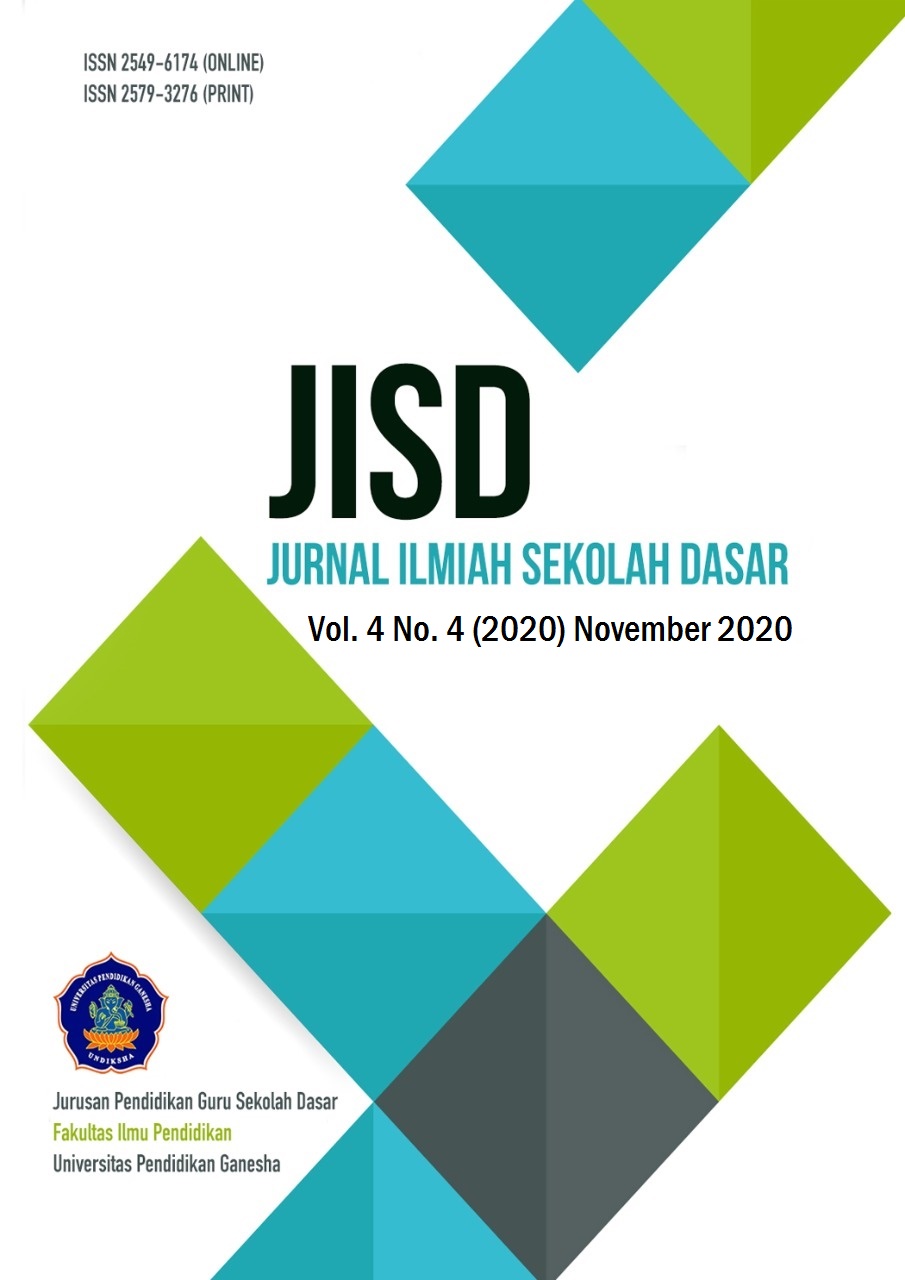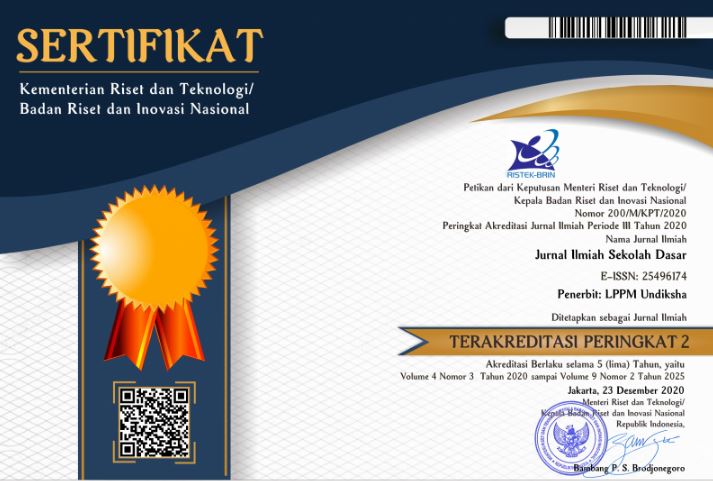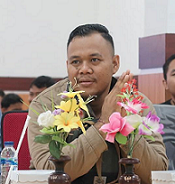Development of Thematic Magnetic Board Media (PAMANTIK) in Thematic Learning in Third Grade Elementary Schools
DOI:
https://doi.org/10.23887/jisd.v4i4.29113Keywords:
learning media, thematic learning, magnetic boardAbstract
In general, the use of instructional media in elementary schools is still lacking. The development of learning media that is more varied and innovative and integrated into the 2013 curriculum is needed. One of them is the Thematic Magnetic Board (PAMANTIK) media developed by thematic learning and is integrated with the 2013 curriculum. The purpose of this study is to analyze the process of developing instructional media. PAMANTIK according to the characteristics of thematic learning and knowing the feasibility of PAMANTIK learning media. A team of media experts carried out the results of the feasibility of this development research, material experts, and education experts with the interpretation category "Very Appropriate." While the students' responses to PAMANTIK media were carried out with limited trials on third-grade elementary school students, the interpretation category was "Very Good." Based on the research and development results, it was concluded that the PAMANTIK learning media was very good and suitable for use in elementary schools. PAMANTIK media development has implications for increasing student motivation in thematic learning by using integrated learning media in thematic learning.
References
Agustina, F. (2017). Pengembangan Media Papan Kantong Pintar Doraemon Pada Pembelajaran Tematik. Universitas Muhamadiyah Malang.
Arianti, N. M., Wiarta, I. W., & Darsana, I. W. (2019). Pengaruh Model Pembelajaran Problem Posing Berbantuan Media Semi Konkret terhadap Kompetensi Pengetahuan Matematika. Jurnal Ilmiah Sekolah Dasar, 3(4). https://doi.org/10.23887/jisd.v3i4.21765
Asrohah, H. (2014). Pembelajaran Tematik. Jakarta: Rajawali Press.
Darmawan. (2010). Penggunaan Pembelajaran Berbasis Masalah Dalam Meningkatkan Kemampuan Berpikir Kritis Siswa Pada Pembelajaran IPS Di MI Darrusaadah Pandeglang. Jurnal Penelitian Pendidikan, 1(1). Retrieved from http://jurnal.upi.edu/md/view/195/penggunaan-pembelajaran-berbasis-masalah-dalam-meningkatkan-kemampuan-berpikir-kritis-siswa-pada-pembelajaran-ips-di-mi-darrusaadah-pandeglang.html
Devi, & Maisaroh, S. (2017). Pengembangan Media Pembelajaran Buku Pop-Up Wayang Tokoh Pandhawa Pada Mata Pelajaran Bahasa Jawa Kelas V SD. Jurnal PGSD Indonesia, 3(2), 1–16. Retrieved from http://ojs.upy.ac.id/ojs/index.php/jpi/article/view/985
Diyantari, I. A. K. D., Wiyasa, N., & Manuaba, S. (2020). Model Snowball Throwing Berbantuan Media Pop Up Book Berpengaruh Terhadap Kompetensi Pengetahuan Ipa. Jurnal Ilmiah Pendidikan Profesi Guru, 3(1), 9–21. https://doi.org/http://dx.doi.org/10.23887/jippg.v3i1.26973
Fadhilah, U. (2017). Pengembangan Media Papan Point Magnet Pada Subtema Kegiatan Siang Hari. Universitas Muhamadiyah Malang.
Fitri, Saparahayuningsih, & Agustriana. (2017). Perencanaan Pembelajaran Kurikulum 2013 Pendidikan Anak Usia Dini. Jurnal Ilmiah Potensia, 2(1). https://doi.org/https://doi.org/10.33369/jip.2.1.1-13
Hartini, S., Misbah, Dewantara, D., Oktovian, R. A., & Aisyah, N. (2017). Developing learning media using online prezi into materials about optical equipments. Jurnal Pendidikan IPA Indonesia, 6(2), 313–317. https://doi.org/10.15294/jpii.v6i2.10102
Herayanti, L., Habibi, H., & Fuaddunazmi, M. (2017). Pengembangan Media Pembelajaran Berbasis Moodle pada Matakuliah Fisika Dasar. Jurnal Cakrawala Pendidikan, 36(2), 210–219. https://doi.org/10.21831/cp.v36i2.13077
Karisma, I. K. E., Margunayasa, I. G., & Prasasti, P. A. T. (2020). Pengembangan Media Pop-Up Book pada Topik Perkembangbiakan Tumbuhan dan Hewan Kelas VI Sekolah Dasar. Jurnal Ilmiah Sekolah Dasar, 4(2), 121. https://doi.org/10.23887/jisd.v4i2.24458
Krissandi, & Rusmawan. (2015). KENDALA GURU SEKOLAH DASAR DALAM IMPLEMENTASI KURIKULUM 2013. Jurnal Pendidikan Indonesia, 34(3), 457–467. Retrieved from https://journal.uny.ac.id/index.php/cp/article/view/7409/pdf
Kurnia, V. T., Damayani, A. T., & Kiswoyo, K. (2019). Keefektifan Model Pembelajaran Number Head Together (NHT) Berbantu Media Puzzle Terhadap Hasil Belajar Matematika. Jurnal Ilmiah Sekolah Dasar, 3(2), 192. https://doi.org/10.23887/jisd.v3i2.17772
Lestari, K. P., Putra, D. K. N. S., & Negara, I. G. A. O. (2018). Pengaruh Model Discovery Learning Berbantuan Media Audio Visual dalam Setting Lesson Study Terhadap Hasil Belajar IPA Mahasiswa PGSD Undiksha UPP Denpasar Tahun 2017. Jurnal Ilmiah Sekolah Dasar, 2(1), 40–45. https://doi.org/http://dx.doi.org/10.23887/jisd.v2i1.13898
Majid, A. (2014). Pembelajaran Tematik Terpadu. Bandung: PT Remaja Rosdakarya.
Prabaningrum, I. G. A. I., & Putra, I. K. A. (2019). Pengaruh Model Pembelajaran Kooperatif Team Assisted Individualization Berbantuan Media Semi Konkret Terhadap Kompetensi Pengetahuan Matematika. Jurnal Ilmiah Sekolah Dasar, 3(4), 414. https://doi.org/10.23887/jisd.v3i4.21775
Puspitasari. (2018). Metode Pembelajaran Bermain Peran Pada Pembelajaran Bahasa Indonesia. Jurnal Cakrawala Pendas, I(1), 55–64. https://doi.org/http://dx.doi.org/10.31949/jcp.v1i1.347
Qondias, Anu, & Niftalia. (2016). Pengembangan Media Pembelajaran Tematik Berbasis Mind Mapping SD Kabupaten Ngada Flores. Jurnal Pendidikan Indonesia, 5(2), 176--182. Retrieved from https://ejournal.undiksha.ac.id/index.php/JPI/about
Rachma. (2018). Pengembangan Media Papan Misi Pintar Tema Peduli Terhadap Makhluk Hidup. Universitas Muhamadiyah Malang.
Rahmayani, A., Siswanto, J., & Arief Budiman, M. (2019). Pengaruh Model Pembelajaran Discovery Learning dengan Menggunakan Mediavideo Terhadap Hasil Belajar. Jurnal Ilmiah Sekolah Dasar. https://doi.org/10.23887/jisd.v3i2.18055
Rahmi, M. S. M., Budiman, M. A., & Widyaningrum, A. (2019). Pengembangan Media Pembelajaran Interaktif Macromedia Flash 8 Pada Pembelajaran Tematik Tema Pengalamanku. International Journal Of Elementary Education, 3(2), 178–185. https://doi.org/10.23887/ijee.v3i2.18524
Rosidah, A. (2016). Penerapan Media Pembelajaran Visual Untuk Meningkatkan Pemahaman Konsep Siswa Pada Mata Pelajaran Ips. Jurnal Cakrawala Pendas, 2(2). https://doi.org/10.31949/jcp.v2i2.499
Siddiq, Sudarma, & Simamora. (2020). Pengembangan Animasi Dua Dimensi Pada Pembelajaran Tematik Untuk Siswa Kelas III Sekolah Dasar. Jurnal Edutech Undiksha, 8(2), 49–63. Retrieved from https://ejournal.undiksha.ac.id/index.php/JEU/article/view/28928
Sirait, & Apriyani. (2020). Pengaruh Penggunaan Strategi Pembelajaran Aktif ICM (Index Card Match) Terhadap Hasil Belajar Matematika. Jurnal Pendidikan Matematika Indonesia, 5(1), 46–48. https://doi.org/https://dx.doi.org/10.26737/jpmi.v5i1.1710
Sofyan, Rustono, & Hamdu. (2016). Pengembangan Media Pembelajaran Tematik Berbasis Multimedia Interaktif Pada Subtema Ayo Cintai Lingkungan. PEDADIDAKTIKA: Jurnal Ilmiah Pendidikan Guru Sekolah Dasar, 3(2). Retrieved from https://ejournal.upi.edu/index.php/pedadidaktika/article/view/5157
Sugiyono. (2015). Metode Penelitian & Pengembangan Research and Development. Bandung: Alfabeta.
Tafqihan, Z. (2011). Karakteristik Dan Pemilihan Media Pembelajaran Dalam E-Learning. Cendekia: Jurnal Kependidikan Dan Kemasyarakatan, 9(2), 141–154. https://doi.org/https://doi.org/10.21154/cendekia.v9i2.871
Wulandari, Sudatha, & Simamora. (2020). Pengembangan Pembelajaran Blended Pada Mata Kuliah Ahara Yoga Semester II di IHDN Denpasar. Jurnal Edutech Undiksha, 8(1), 1–15. https://doi.org/http://dx.doi.org/10.23887/jeu.v8i1.26459
Downloads
Published
How to Cite
Issue
Section
License
Authors who publish with the Journal Ilmiah Sekolah Dasar agree to the following terms:
- Authors retain copyright and grant the journal the right of first publication with the work simultaneously licensed under a Creative Commons Attribution License (CC BY-SA 4.0) that allows others to share the work with an acknowledgment of the work's authorship and initial publication in this journal.
- Authors are able to enter into separate, additional contractual arrangements for the non-exclusive distribution of the journal's published version of the work (e.g., post it to an institutional repository or publish it in a book), with an acknowledgment of its initial publication in this journal.
- Authors are permitted and encouraged to post their work online (e.g., in institutional repositories or on their website) prior to and during the submission process, as it can lead to productive exchanges, as well as earlier and greater citation of published work. (See The Effect of Open Access)










